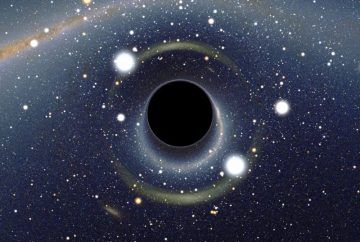Jennifer Ouellette in Ars Technica:
 Israeli physicists think they have confirmed one of the late Stephen Hawking’s most famous predictions by creating the sonic equivalent of a black hole out of an exotic superfluid of ultra-cold atoms. Jeff Steinhauer and colleagues at the Israel Institute of Technology (Technion) described these intriguing experimental results in a new paper in Nature.
Israeli physicists think they have confirmed one of the late Stephen Hawking’s most famous predictions by creating the sonic equivalent of a black hole out of an exotic superfluid of ultra-cold atoms. Jeff Steinhauer and colleagues at the Israel Institute of Technology (Technion) described these intriguing experimental results in a new paper in Nature.
The standard description of a black hole is an object with such a strong gravitational force that light can’t even escape once it moves behind a point of no return known as the event horizon. But in the 1970s, Hawking demonstrated that—theoretically, at least—black holes should emit tiny amounts of radiation and gradually evaporate over time.
Blame the intricacies of quantum mechanics for this Hawking radiation. From a quantum perspective, the vacuum of space continually produces pairs of virtual particles (matter and antimatter) that pop into existence and just as quickly annihilate away. Hawking proposed that a virtual particle pair, if it popped up at the event horizon of a black hole, might have different fates: one might fall in, but the other could escape, making it seem as if the black hole were emitting radiation. The black hole would lose a bit of its mass in the process. The bigger the black hole, the longer it takes to evaporate. (Mini-black holes the size of a subatomic particle would wink out of existence almost instantaneously.)
More here.
